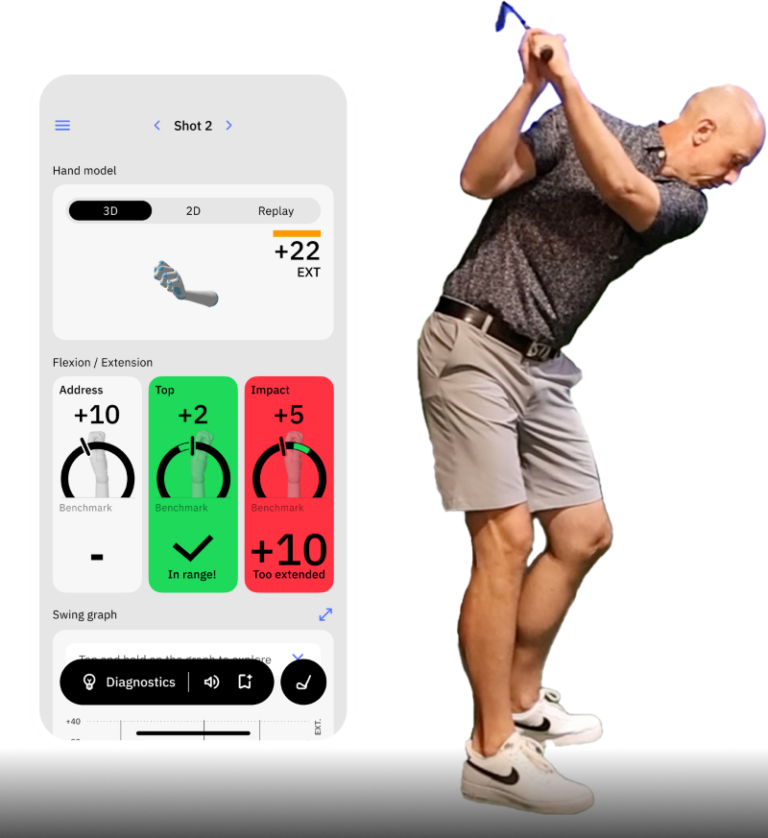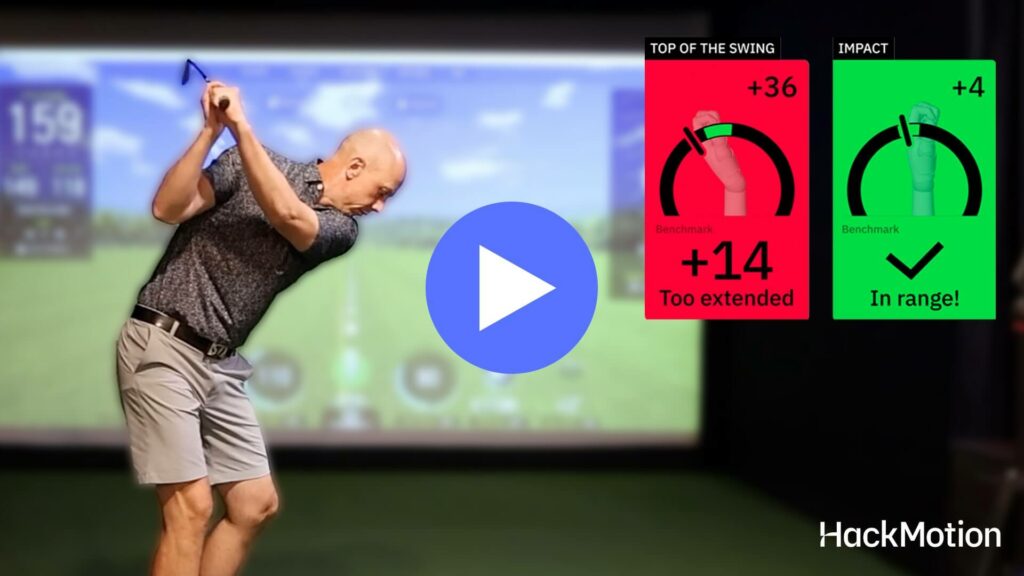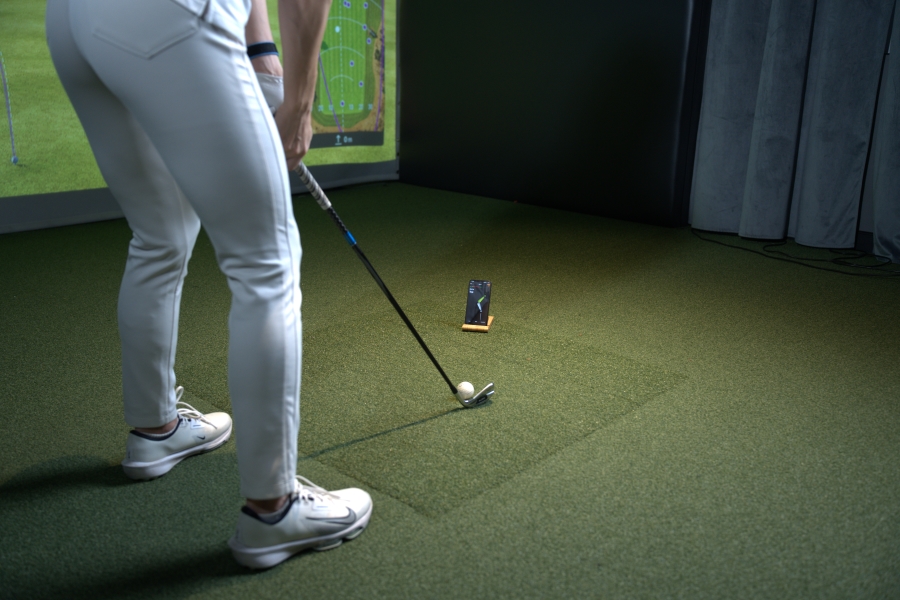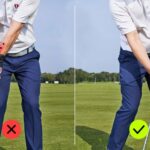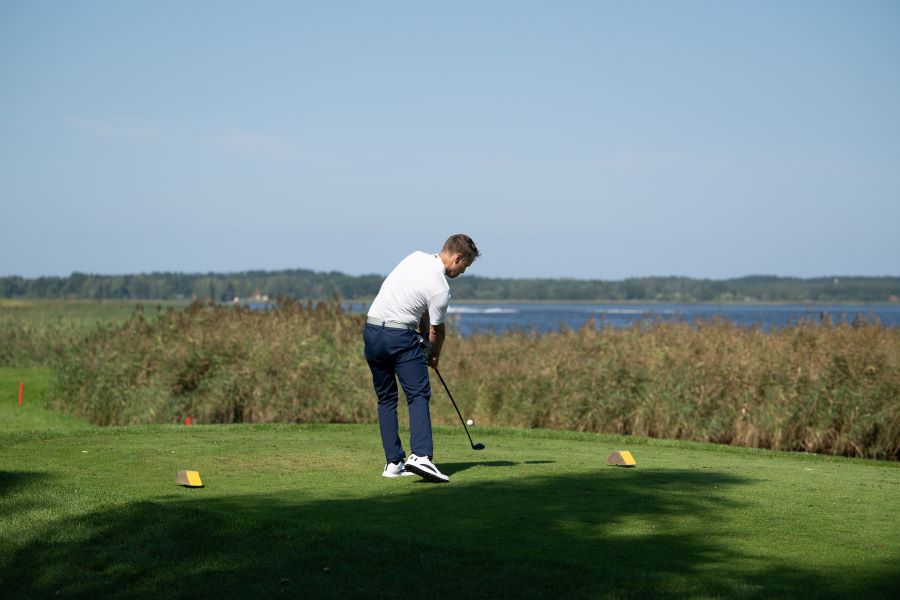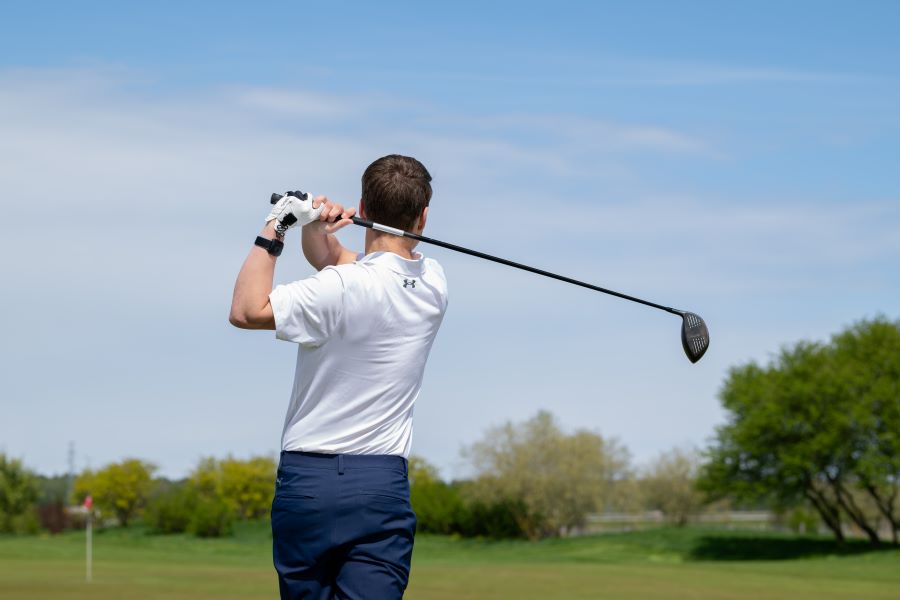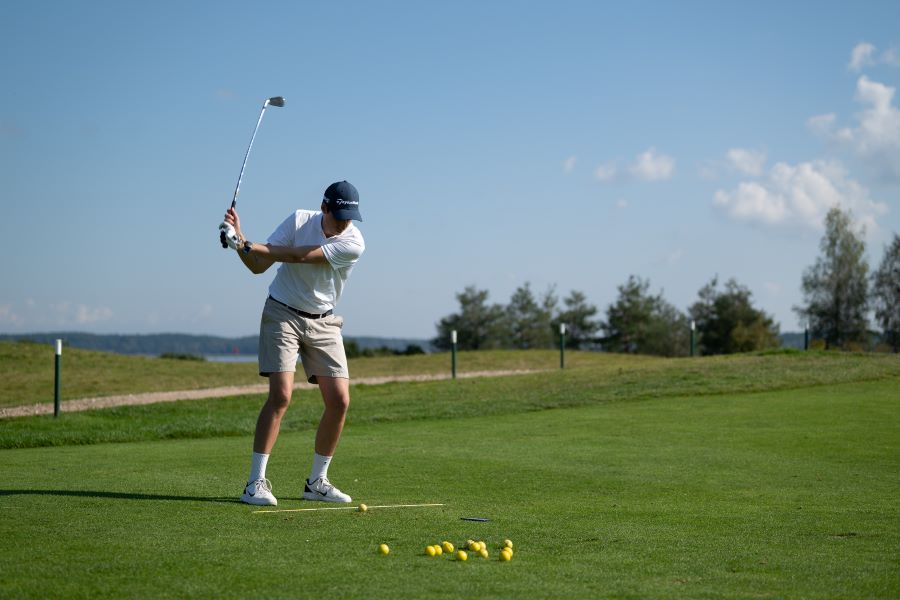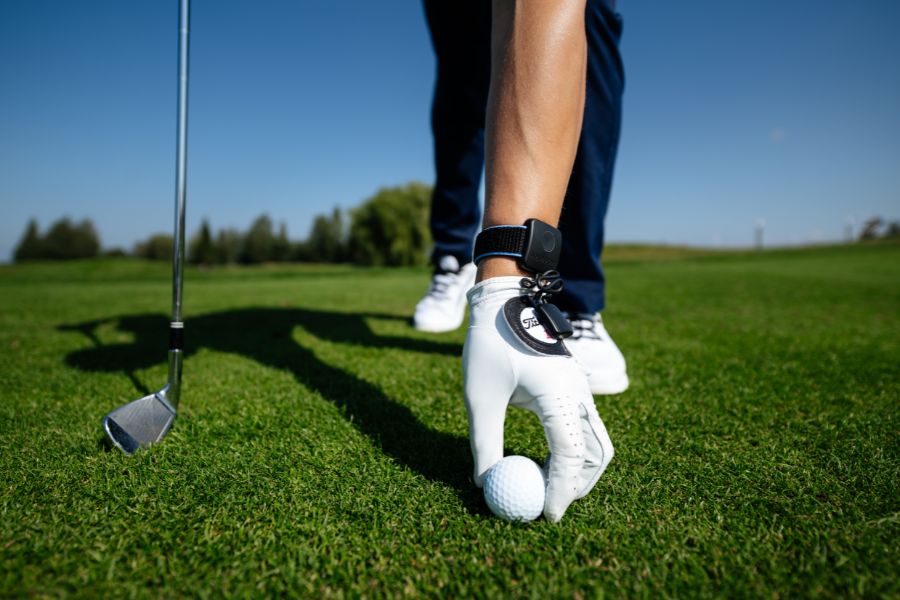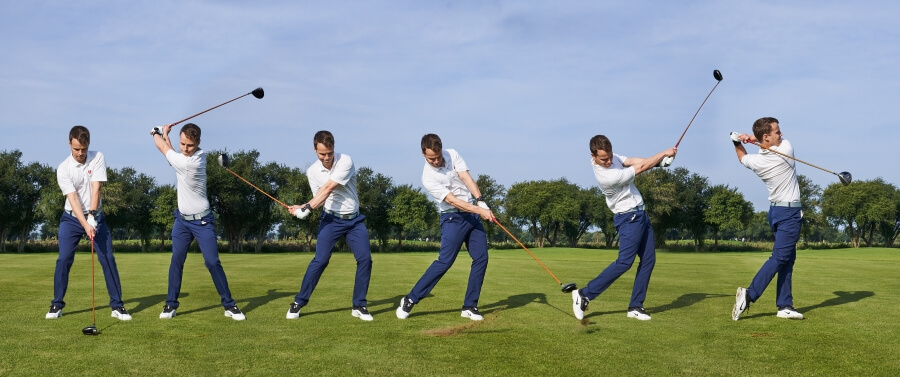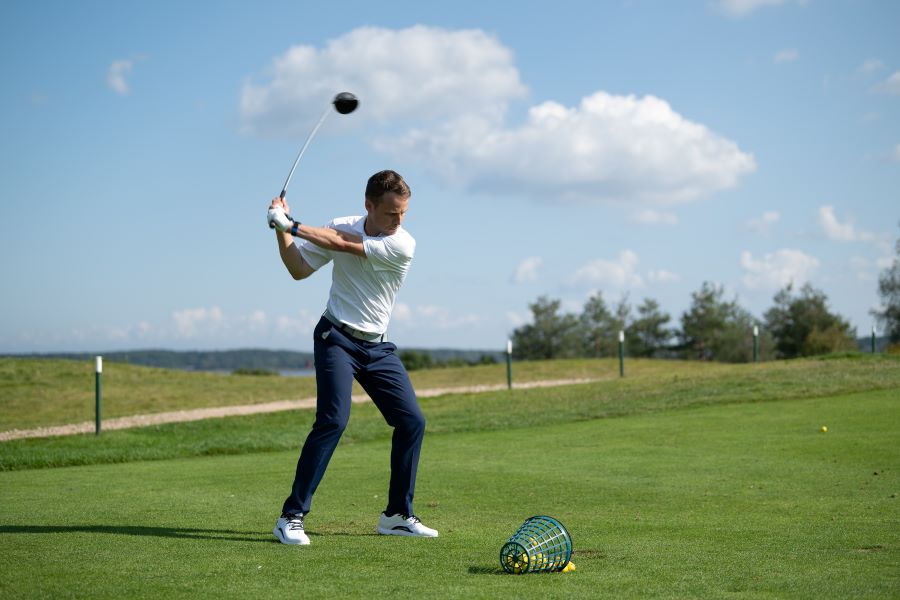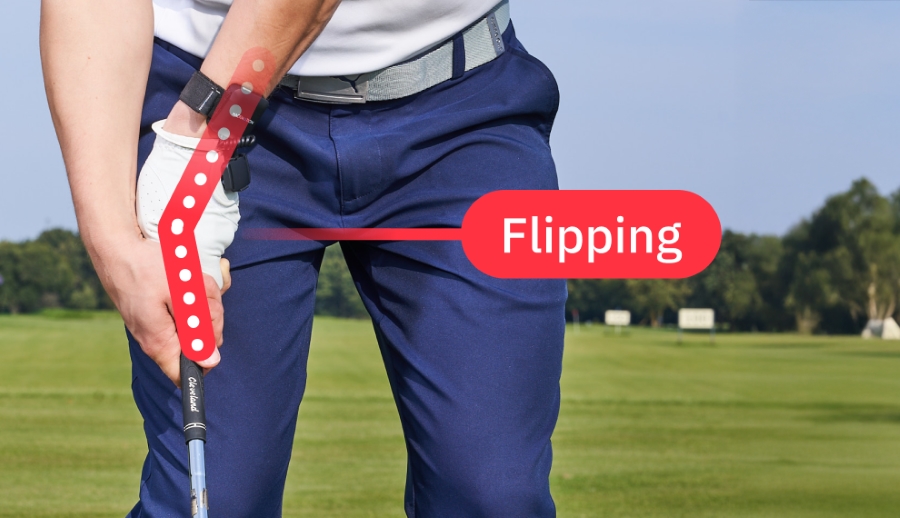How to Stop Losing Spine Angle in Golf: Tips & Fixes
Losing spine angle in the downswing is a common mistake even for better players. The problem with losing spine angle is that it’s difficult to feel. Most players don’t know they are doing it before it starts having an impact on their game.
A steady spine angle lets you return the club to the turf on the correct arc, compress the ball, and keep your swing path neutral.
When you “stand up” in the downswing, the hips thrust toward the ball, the chest lifts, the low-point shifts behind the ball, and contact gets thin, fat, or both.
We will look at the main reasons golfers lose spine angle and the fixes that rebuild better posture and movement on the downswing.
Key Takeaways
Here are some of the most important things you should know about the loss of spine angle and the issues it can have in your golf game.
- Loss of spine angle usually starts before impact. Hanging back on the trail foot, early hip thrust, or casting the club lengthens the swing radius and makes you stand up to reach the ball.
- Balanced weight + centered rotation = steady posture. Feel 60-70% weight on the lead foot from takeaway through finish, and turn around a fixed spine instead of sliding.
- Quiet wrists will help. A flat (or slightly flexed) lead wrist and bent trail wrist shallow the shaft so you don’t need to lift for “room.”
- Use a Drill with feedback. The Casting Drill or Alignment-Stick Wrist Check will give you instant clues when your posture slips.
Contents
What Causes Loss of Spine Angle?
Here are a few of the reasons you may be losing your spine angle in your downswing. Again, remember that this can be a difficult thing to feel so look for these causes.
- Early hip thrust toward the ball: The pelvis moves closer to the target line, and you have to stand up to avoid hitting the turf first or striking the ball with a wide-open clubface.
- Weight stuck on the trail foot: Your weight should be moving to the lead foot as part of the downswing. If it hangs back you may have to stand up so the club can reach the golf ball.
- Casting or early release: Throwing the clubhead early lengthens the arm-to-club radius; posture rises to match the new, wider arc. Most golfers cast because they believe they are creating power in their golf swing.
- Clubface is opening in transition: An open face feels dangerous; the golfer stalls the body turn and lifts to flip the face square.
Fixes and Drills to Hold Your Spine Angle
Now that you have some of the most important causes of losing spine angle in the downswing lets work on how you can fix this issue in your golf swing.
Try working through this list in order to try to get your balance down first and then working on rotation and wrist angles.
Weight Forward Half Swings
Getting your weight forward moves the golf swing’s low point in front of the ball.
When you do this, there is no need to lose the spine angle in the downswing, and you can stay in your posture and strike the golf ball.
Try taking some swings where you preset your weight forward.
- Video timestamp – 0:30
Weight-Forward Half Swings – Step by Step:
- Setup: Take a narrow stance with a mid-iron and place 70% of your weight on your lead foot at address.
- Backswing: Make waist-high backswings without allowing your weight to shift to your trail foot.
- Low Point Focus: Brush the ground just after the ball or chalk line every time — this ensures proper low point control.
- Progress: Once your contact is consistently forward, gradually lengthen the swing while maintaining the same weight-forward feel.
Keep Your Center with the Centered Turn Feel Drill
If your tendency is to sway off the golf ball, staying centered can ensure you don’t lose your spine angle in the downswing.
A sway left or right changes the spine tilt. Focus on turning around a fixed axis and keeping your chest over the ball.
Here’s what a solid iron swing with good rotation looks like. Feel free to pause anytime and check out each position along the way.
To get your body turning around your center instead of swaying side to side, try the Centered-Turn Feel Drill.
Print out the steps below and take them to the range so you can start feeling a more solid swing.
Centered-Turn Feel Drill – Step by Step:
- Set Up a Barrier: Place a range basket, alignment stick, or foam roller just outside your trail hip at address.
- Slow Backswings: Make slow backswings without knocking the object. The hips stay centered while you pivot around your body.
- Lead Hip Bump: On the downswing, feel your lead hip bump slightly toward the target — not toward the golf ball.
- Stay Over the Ball: Hit balls while feeling like your shirt buttons stay “on top of” the ball through impact.
Hips Stay Back
Early extension starts when the pelvis drives toward the ball.
Putting a solid object against your glutes gives instant feedback: if you keep light pressure on it, your spine angle stays constant; if you lose contact, you’ve stood up.
Glute Contact Hip Rotation – Step by Step:
- Setup the Prop: Place an alignment stick, range bag, or chair so its front edge lightly touches your trail-side glute at address.
- Address Position: Bend from the hips with light knee flex and your chest over the ball. Your backside should stay in light contact with the prop.
- Backswing: Turn to the top while maintaining that glute contact. If you lose it, you’re swaying instead of rotating.
- Downswing: Push your trail hip back into the prop while bumping your lead hip toward the target.
- Finish & Progress: Hit a half-speed shot and freeze your finish—your glutes should still brush the prop. Build up to fuller swings once you can maintain contact.
Casting Drill – Retain the Angle
When the arms take over from the top of the backswing, it’s easy to lose spine angle.
As you get close to the ball, there may not be enough for you to strike the ball cleanly if your lower body is not leading the way and turning out of the way.
- Video timestamp – 4:55
The Casting Drill helps you maintain the lag in your golf swing by ensuring your lower body initiates the downswing while your wrists hold the lag.
Holding lag keeps the club shorter and shallower, so you don’t need to raise your torso for clearance.
Fix Your Casting with HackMotion
Train to fix casting by generating power with your core and lower body.
HackMotion Casting Drill – Step by Step:
- Find the Drill: Open the HackMotion app and select the Casting Drill.
- Pause at the Top: Swing to the top and pause when you feel the vibration cue from HackMotion.
- Start Down Slowly: Begin the downswing by rotating your hips while maintaining the angle between the lead arm and shaft — avoid casting early.
- Let Arms Drop: Allow your arms to fall naturally while keeping the club lagging behind your hands.
- Build Up Speed: Start with soft shots, then gradually move to full swings while maintaining green feedback in the HackMotion app.
Square The Clubface Early From the Top
Having a square clubface on your downswing makes it easier to hold your spin angle in the downswing. The Motorcycle Drill is a great way to work on squaring the club a bit sooner from the top.
Twisting the lead wrist into flexion squares the face early, eliminating the urge to flip (and lift the spine angle) at impact. This Motorcycle Drill can be found in the HackMotion app.
- Video timestamp – 6:50
Motorcycle Drill – Step by Step:
- Find the Drill: Open the HackMotion app and select the Motorcycle Drill.
- Add Flexion in Transition: From the top of the swing, feel like you’re revving a motorcycle with your lead wrist — knuckles turning down and lead wrist flexing.
- Pause at Shaft Parallel: Stop when the shaft is parallel to the ground (P6). Check HackMotion to ensure your lead wrist flexion is in range.
- Reps Before Full Swings: Practice this move for 10 slow reps. Then progress to full swings while maintaining that same lead wrist feel from the top down.
Alignment Stick Wrist Check
Now that you have your body turning and your weight moving, you can start to fine tune your wrist angles to get more distance, the ball flight you want, and increased accuracy.
The alignment stick wrist check prevents early release and keeps the handle leading,g so your spine angle can stay constant as you rotate.
- Video timestamp – 5:20
Alignment-Stick Wrist Check – Step by Step:
- Setup: Slide an alignment stick down the grip so it extends past your lead hip.
- Address the Ball: Set up with a slight shaft lean forward so the stick lightly touches your lead side.
- Waist-High Swings: Make small swings to waist-high, ensuring the stick doesn’t slap into your ribs — this means your wrists are stable.
- Progress to Punch Shots: When comfortable, move to punch shots, then full swings, maintaining proper wrist angles and body rotation throughout.
Final Thoughts
Trying to just focus on maintaining your spine angle is difficult.
However, if you change the focus to maintaining a balanced weight, a centered pivot, and stable wrist angles, it becomes easier to maintain your spine angle in the downswing.
Groove those fundamentals with the drills above and reinforce them with HackMotion’s live wrist data. Stay down, strike it solid, and watch your compression and ball striking improve.
